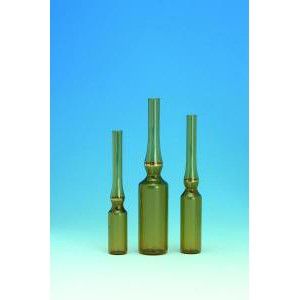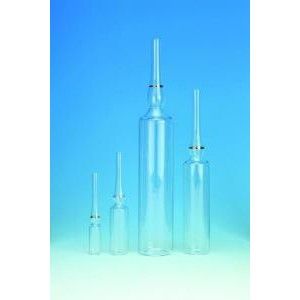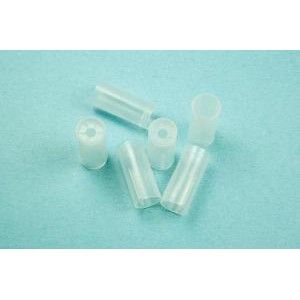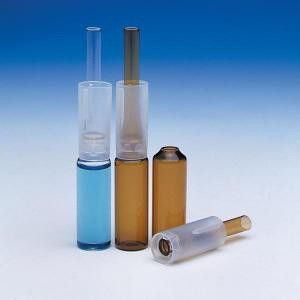Ampules are small, sealed glass or plastic containers that hold liquid medication. They are usually used for intravenous (IV) administration of medications, but can also be used for intramuscular (IM) injections and other purposes.
History


Ampules have been used for centuries to store and transport liquids. The first ampules were made of glass and were used to transport wine and other liquids. Glass ampules were also used to store and transport medical liquids, such as blood and urine samples.
The modern ampule was invented in the 19th century. Early ampules were made of glass and were sealed with a cork. Today, ampules are made of plastic and are sealed with a plastic cap.
How Ampules Are Used
Ampules are most commonly used for intravenous (IV) administration of medications. IV administration is the process of injecting a medication directly into the bloodstream. This allows the medication to be absorbed more quickly and effectively than other methods of administration, such as taking a pill.
Ampules can also be used for intramuscular (IM) injections. IM injections are given into the muscle, rather than the vein. IM injections are often used for vaccinations.
Ampules can also be used to store liquids for other purposes, such as transporting urine or blood samples.
Drawing Medication From an Ampule
When an ampule is needed for IV administration, the first step is to break the ampule open. This is done by holding the ampule in one hand and using the thumb of the other hand to snap the top off of the ampule.
Once the ampule is open, the medication can be drawn into a syringe. The syringe is then attached to an IV line and the medication is injected into the bloodstream.
When an ampule is needed for IM injection, the ampule is opened and the medication is injected into the muscle with a needle and syringe.
Drawing medication from an ampule is a simple process, but it is important to follow the instructions carefully to avoid contamination and ensure proper administration.
Safety Precautions


Ampules are made of glass or plastic and are designed to be breakable. This makes them safe to use, but it is important to handle them with care.
If an ampule is dropped, it should be inspected for cracks or breaks. If the ampule is damaged, it should be discarded and a new one should be used.
Ampules should always be stored in a safe place, out of reach of children and pets.
How to open an ampule
If you are wondering how to open an ampule, there are a few different ways that you can do this. Depending on the type of ampule that you have, you may need to use different methods. Here are a few ways that you can open an ampule:
Using a Cotton Swab:
If you have a cotton swab, you can use this to open an ampule. Wet the cotton swab with water and then insert it into the top of the ampule. Twist the cotton swab to break the seal and then carefully remove it.
Using a Heat Source:
Another way that you can open an ampule is by using a heat source. You can either use a lighter or a match to heat the top of the ampule. Carefully hold the ampule with the top pointing downwards and heat the top until it is soft. Once the top is soft, you can twist it open.
Opening an ampule can be done in a few different ways. The most common way is to use an ampule opener, which is a small tool that is inserted into the neck of the ampule and then twisted. This breaks the seal of the ampule and allows the contents to be released. Another way to open an ampule is to use a pair of scissors. The scissors are inserted into the neck of the ampule and then the tips of the scissors are used to break the seal. The contents can then be released.
Ampule Openers


The most common way to open an ampule is to use an ampule opener. Ampule openers are small tools that are inserted into the neck of the ampule and then twisted. This breaks the seal of the ampule and allows the contents to be released.
To use an ampule opener, first insert the opener into the neck of the ampule. The opener should be inserted so that the disk is facing the neck of the ampule. Next, twist the opener clockwise. The disk on the opener will break the seal of the ampule and the contents will be released.
If you do not have an ampule opener, you can use a pair of scissors to open the ampule. To use scissors, insert the tips of the scissors into the neck of the ampule. The scissors should be inserted so that the blades are parallel to the neck of the ampule. Next, use the tips of the scissors to break the seal of the ampule. The contents will be released.
When opening an ampule, it is important to be careful not to break the ampule. If the ampule is broken, the contents will be exposed to the air and will not be sterile.
Ampule Snapper


Ampule snappers are devices used to open ampules without breaking them. They are also known as ampule openers. Ampules are small, glass containers that are used to store and transport liquids. They are often used in the medical and pharmaceutical industries.
Ampule snappers are designed to open ampules quickly and safely. They usually have two blades that come together at a point. The blades cut through the neck of the ampule, leaving a clean, smooth edge. This prevents the contents of the ampule from spilling out and helps to ensure that the ampule can be resealed.
Ampule snappers are typically made of stainless steel or plastic. Some models have a built-in cutter, while others must be used with a separate cutting tool. Ampule snappers are available in various sizes, depending on the size of the ampule.
Ampule snappers are used by healthcare professionals and patients. They are oftentimes used in emergency situations when time is of the essence. Ampule snappers are also used in laboratories and research facilities.
Ampule snappers are safe and easy to use. They can be sterilized and reused. Some models are disposable.
Ampule snappers are a vital piece of equipment in the medical and pharmaceutical industries. They are used to open ampules quickly and safely. Ampule snappers are available in various sizes and models. They are made of stainless steel or plastic. Some models are disposable. Ampule snappers are safe and easy to use.
Ampoules are small glass vessels that are sealed at one end and used to hold injectable solutions, such as vaccines, hormones, and medications. They are made from borosilicate glass, which is strong and heat resistant.
Ampoules are manufactured by several different companies, including Gerresheimer, Schott, and Nipro. Gerresheimer is a leading provider of ampoules, with over 50 years of experience in the production of glass ampoules. Schott is a world leader in the production of borosilicate glass, and has been manufacturing ampoules for over 30 years. Nipro is a Japanese company that is one of the largest manufacturers of medical devices in the world.
Ampoules are available in a variety of sizes, from 1ml to 20ml. They can be manufactured with either a plastic or metal plunger. The type of plunger used will depend on the intended use of the ampoule.
Ampoules are typically used only once and then disposed of, but there are some types that can be reused. Reusable ampoules are made of glass that has been specially tempered to withstand repeated reheating. These ampoules are usually only used for research purposes, as they are more expensive than disposable ampoules.
Ampoules can be either clear or amber in color. Clear ampoules are used for solutions that are light sensitive, as the amber color of the glass protects the solution from light.
Ampoules are typically packaged in trays, boxes, or bags. They are often shipped in temperature-controlled containers to keep the solutions they contain from freezing or overheating.
